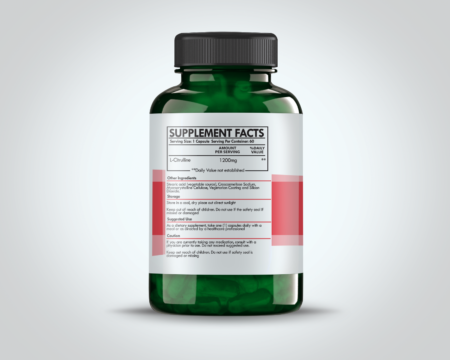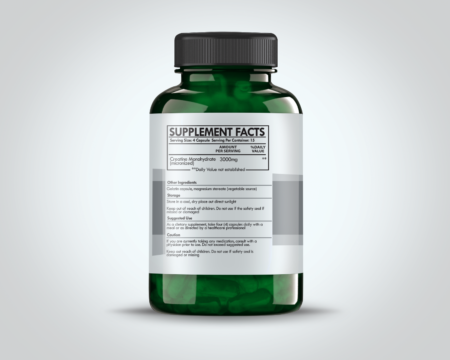Descripción
What is Astaxanthin?
Astaxanthin is a carotenoid pigment, recognized for its vibrant red and pink hues, which is primarily sourced from certain microalgae and seafood. This natural compound belongs to the xanthophyll family and is known for its powerful antioxidant properties, which play a crucial role in combating oxidative stress in the body. Its unique chemical structure differentiates astaxanthin from other carotenoids, as it contains a complex arrangement of double bonds and an extended chain of conjugated pi-electrons. This composition enables it to quench free radicals effectively, making it a potent defender against cellular damage.
Astaxanthin is predominantly found in microalgae such as Haematococcus pluvialis, which produces the compound in response to environmental stressors. This microalga acts as the primary source of astaxanthin for many dietary supplements on the market. Furthermore, various seafood, including salmon, shrimp, and krill, are notable sources of astaxanthin, often contributing to their characteristic coloration. The presence of this carotenoid also enhances the health benefits associated with consuming these marine animals, which are rich in Omega-3 fatty acids.
Historically, astaxanthin has been utilized in traditional medicine, particularly in cultures that integrated diets rich in fish and algae, leading to its longstanding reputation for promoting health. In various studies, it has been linked to several health benefits, including anti-inflammatory effects and improvements in skin health, eye health, and athletic performance. As interest in natural supplements grows, astaxanthin has gained popularity among modern consumers seeking to harness its antioxidant power. This increasing trend reflects a shift towards preventive health and wellness, highlighting the significance of astaxanthin in today’s nutritional landscape.
Health Benefits of Astaxanthin
Astaxanthin, a powerful carotenoid and antioxidant found in various natural sources, offers a multitude of health benefits that have garnered significant attention in recent years. One of the primary advantages of astaxanthin supplementation is its strong anti-inflammatory properties. Research has shown that astaxanthin can effectively mitigate inflammation, which is a precursor to many chronic diseases. This attribute makes it a valuable component for individuals seeking to enhance their overall health and reduce the risk of inflammatory conditions.
In addition to its anti-inflammatory effects, astaxanthin is renowned for its potential to improve skin health. Studies indicate that astaxanthin supplementation can provide protection against UV radiation, thus reducing the risk of skin damage while promoting skin hydration and elasticity. This benefit is especially pertinent in an era where many individuals are increasingly exposed to harmful environmental factors. Furthermore, research has highlighted astaxanthin’s ability to minimize the appearance of fine lines and wrinkles, making it a sought-after ingredient in various skincare products.
Astaxanthin also plays a crucial role in promoting eye health. Specifically, its antioxidant properties are believed to protect against age-related macular degeneration (AMD), a leading cause of vision loss. Recent studies suggest that astaxanthin supplementation can improve visual acuity and reduce eye fatigue, particularly in those who spend extended periods in front of screens. By promoting retinal health, astaxanthin may significantly contribute to maintaining optimal vision.
Moreover, athletes have turned to astaxanthin for its potential impact on performance. Research has shown that astaxanthin enhances endurance and recovery, allowing athletes to train harder and recover more quickly after intense workouts. This effect is attributed to its ability to combat oxidative stress and reduce muscle damage, making astaxanthin a valuable supplement for athletic enhancements.
How to Take Astaxanthin: Dosage and Recommendations
When considering the integration of astaxanthin supplements into one’s regimen, understanding the appropriate dosage and methods of consumption is crucial for maximizing their benefits. Existing research and expert opinions suggest a typical dosage range of 4 to 12 milligrams per day for healthy adults. It is vital to begin with a lower dose, gradually increasing it while monitoring individual responses. Dosage adjustments may be warranted based on age, specific health conditions, and personal health goals, allowing for a tailored approach.
Frequency of intake is also an essential factor. Astaxanthin can be taken daily, ensuring consistency in its antioxidant effects. Some studies indicate that divided doses throughout the day may enhance absorption and efficacy. Consumption of astaxanthin with meals is highly recommended, particularly with fat-containing foods, as its absorption is significantly improved with dietary fats. This is due to astaxanthin’s lipophilic nature, which allows it to blend with fats in the digestive system, enhancing bioavailability.
It is important to consider potential factors influencing dosages. Individuals with pre-existing health conditions or unique nutritional requirements may need to adjust their intake accordingly, often in consultation with a healthcare professional. For instance, older adults or those aiming for specific health improvements, such as reducing inflammation or enhancing skin health, might benefit from slightly higher doses. Regular monitoring and professional guidance can ensure that the supplementation of astaxanthin is executed safely and effectively.
Ultimately, adhering to the recommended guidelines and being mindful of personal health circumstances will contribute to the optimal use of astaxanthin supplements. In this way, users can harness the powerful antioxidant properties of astaxanthin to support their overall wellness goals.
Potential Side Effects and Interactions
While astaxanthin is renowned for its numerous health benefits, it is essential to recognize that, like any supplement, it may pose potential side effects and interactions with certain medications or other dietary supplements. Most reported side effects associated with astaxanthin are generally mild and uncommon. These may include digestive disturbances such as bloating or gas, as well as changes in skin pigmentation, particularly in individuals who consume high doses. Other potential adverse reactions, though rare, might involve allergic responses, including hives or symptoms indicative of an allergic reaction. Therefore, individuals with known sensitivities to seafood should exercise caution, as astaxanthin is primarily derived from marine sources.
Moreover, those considering incorporating astaxanthin into their health regimen must be aware of its possible interactions with various medications. Research suggests that astaxanthin may enhance the effects of certain drugs, particularly in processes involving inflammation and oxidative stress. Consequently, individuals taking blood thinners or anti-inflammatory medications should consult healthcare providers prior to starting astaxanthin supplements, as this could affect their treatment outcomes. Additionally, astaxanthin may interact with supplements that have similar antioxidant properties, potentially leading to undesired cumulative effects.
It is advisable for individuals to begin with lower dosages, especially when new to astaxanthin supplementation, and to monitor their body’s responses carefully. Keeping a dialogue open with healthcare professionals is prudent in order to discuss any existing health conditions or concurrent medications that could influence supplementation safety. By seeking professional guidance, individuals can effectively weigh the benefits and risks of incorporating astaxanthin into their daily routine, ensuring a safe approach to enhancing their overall health and well-being.
Choosing the Right Astaxanthin Supplement
When it comes to selecting the right astaxanthin supplement, several key factors warrant careful consideration to ensure that consumers are making informed choices that align with their health goals. The first aspect to assess is the dosage form of the supplement, which can vary widely. Common formats include soft gels, powders, and liquid forms. Soft gels are often favored for their convenience and easy absorption, whereas powders can provide flexibility in dosing but may require mixing with liquids for consumption. Each form has its advantages, so it’s important to choose one that fits seamlessly into your daily routine.
Another critical factor is the source of the astaxanthin. It is worth noting that astaxanthin can be derived from both natural and synthetic sources. Opting for natural astaxanthin, primarily sourced from microalgae, is generally recommended due to its superior efficacy and bioavailability. Verify the labeling to ensure that the product specifically states “natural” astaxanthin, as this can significantly influence the quality of the supplement.
Certifications such as organic or non-GMO status serve as indicators of quality and sustainability. Look for these certifications on the product label as they can offer peace of mind regarding the ethical sourcing and production practices employed by the manufacturer. Speaking of manufacturers, it is advisable to consider the reputation of the brand. Researching customer reviews and ratings, as well as the history of the manufacturer in the dietary supplement industry, can provide valuable insights into product reliability and effectiveness.
Furthermore, consumers should be cautious and read labels diligently. Supplements should include clear information on ingredient sourcing, dosage, and potential allergens. Checking for third-party testing can also enhance confidence in the product’s safety and efficacy. By following these guidelines, individuals can make informed decisions that support their health and wellness journey through astaxanthin supplementation.











Valoraciones
No hay valoraciones aún.